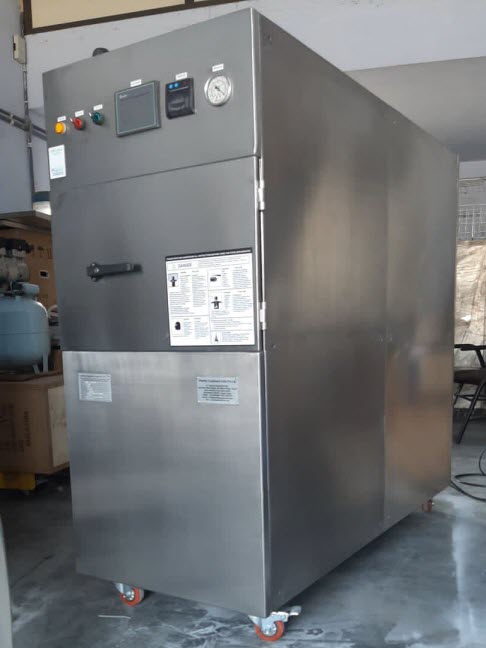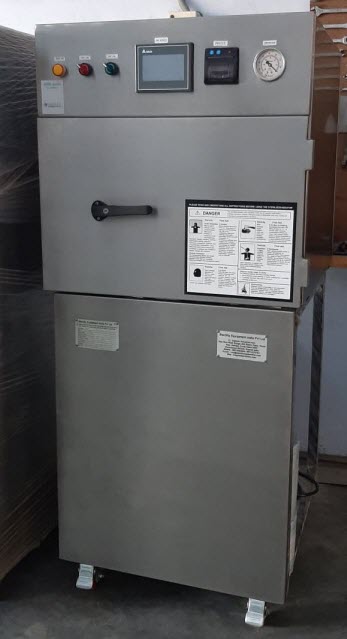ETO (Ethylene Oxide) gas sterilization is a vital process in ensuring the safety of medical equipment and devices, as well as various other industrial applications. However, it is not without its set of challenges. In this article, we will delve into the challenges associated with ETO gas sterilization, focusing on aeration time and environmental concerns. Moreover, we will explore innovative solutions and technologies that have emerged to overcome these challenges, making the sterilization process more efficient and eco-friendly.
Understanding ETO Gas Sterilization
ETO gas sterilization is a widely used method to disinfect and sterilize various products, including medical instruments and pharmaceutical materials. It is effective in eliminating microorganisms like bacteria, viruses, and fungi, ensuring the safety of these products for end-users.
The process involves placing items in a chamber, exposing them to ETO gas, and maintaining specific conditions of temperature, humidity, and gas concentration. After the sterilization cycle, the items must undergo aeration to remove residual ETO gas, which can be harmful if not eliminated.
Challenges in ETO Gas Sterilization
3.1 Aeration Time
One of the primary challenges in ETO gas sterilization is the time-consuming aeration process. Aeration is necessary to remove any remaining ETO gas from sterilized items to meet safety standards. Traditional aeration methods can be slow, taking several hours or even days, depending on the item’s size and complexity.
Efficiency is a significant concern when it comes to aeration. Prolonged aeration time not only affects the turnaround time for sterilized items but also adds to the operational costs. The longer the aeration, the fewer cycles a sterilization facility can complete, impacting overall productivity.
3.2 Environmental Concerns
Another challenge is the environmental impact of ETO gas sterilization. ETO gas is toxic and potentially harmful to both humans and the environment. It is classified as a hazardous air pollutant by the U.S. Environmental Protection Agency, which necessitates strict regulatory controls.
The release of ETO gas into the atmosphere poses environmental risks and health hazards for workers. Proper disposal and containment are essential but can be costly and complex.

Innovative Solutions and Technologies
4.1 Reduced Aeration Time Techniques
In response to the challenge of aeration time, innovative solutions have emerged. Newer ETO sterilization equipment incorporates advanced aeration technology, reducing aeration time significantly. For instance, the use of specialized aeration chambers with improved ventilation systems allows for faster gas removal without compromising safety.
Furthermore, research in aeration optimization has led to the development of algorithms that calculate the precise aeration time required based on various factors, such as item size and gas concentration, making the process more efficient and less time-consuming.
4.2 Environmentally Friendly Approaches
Addressing environmental concerns, researchers and engineers have focused on creating environmentally friendly ETO gas sterilization methods. These methods involve the use of alternative gases that are less toxic and have a lower environmental impact. Moreover, advancements in ETO gas capture and recycling technologies minimize the release of harmful gases into the atmosphere.

Benefits of Advanced ETO Gas Sterilization
The adoption of innovative solutions and technologies in ETO gas sterilization brings several benefits. It not only enhances the safety and efficiency of the sterilization process but also reduces its environmental footprint. The advantages include shorter aeration times, reduced gas emissions, and lower operational costs.
Conclusion
ETO gas sterilization is a crucial process in various industries, but it comes with challenges, especially related to aeration time and environmental concerns. However, the implementation of innovative solutions and technologies has led to more efficient and eco-friendly sterilization processes. These advancements are making ETO gas sterilization safer, faster, and more sustainable.
FAQs
1. Is ETO gas sterilization safe for medical devices?
- Yes, when performed correctly, ETO gas sterilization is safe and effective for a wide range of medical devices.
2. What is the typical duration of aeration in traditional ETO gas sterilization?
- Aeration can take several hours to several days, depending on the size and complexity of the sterilized items.
3. Are there alternatives to ETO gas sterilization that are more environmentally friendly?
- Yes, there are alternative sterilization methods, such as hydrogen peroxide gas plasma, which are considered more environmentally friendly.
4. How can I ensure compliance with environmental regulations when using ETO gas sterilization?
- Compliance can be achieved through proper training, waste management, and the use of advanced ETO gas capture and recycling technologies.
5. What are the key considerations when choosing an ETO gas sterilization service provider?
- Consider their experience, equipment, aeration technology, and commitment to environmental responsibility.





